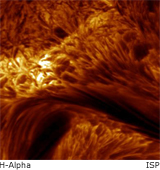Professor

Chris Sneden

Office: RLM 15.312A
(normally enter 15.312)
Hours: MWF 1-2
Phone: (512) 471-1349
email
Course Website

|
 |
Text:
None!
Recommended: D. F. Gray, The Observation and Analysis of Stellar Photospheres
[either the 2nd or (new) 3rd edition]
Suggested: G. W. Collins, The Fundamentals of Stellar Astrophysics
Suggested: W. K. Rose, Advanced Stellar Astrophysics
Suggested: C. R. Cowley, The Theory of Stellar Spectra
Grading:
Out-of-class assignments 60% of grade
Hour tests (2 of them) 40%
Subject Matter, Goals, and Miscellaneous Comments
Astronomy 383C is a graduate-level course on stellar atmospheres. The official course description is broad:
"Observational properties of stellar atmospheres; theoretical calculations of stellar atmospheres and stellar spectra."
The prerequisites for AST 383C are graduate standing and consent of instructor. I will assume that you have either had
or are currently enrolled in AST 380E
Radiative Processes and Radiative Transfer, so that we can plunge into the stellar atmospheres material without
too much delay. I realize that the timing of
this course would be better after having had AST 380E, but the same could be said of most
grad courses that our department offers, so that's life.
My bias in this course? I regard AST 383C as one link between the basic, often elegant
physics that you have ingested, and the real, often messy world of stellar astronomical research.
The assignments will not tax your mathematical abilities. I am not an astrophysicist
as the term is usually meant (that is, I am not a theorist). I am an observational
astronomer, and proud of it. Thus the stellar atmospheres work in this course will have a
strong observational bias to it. This can be seen in the suggested books, which do not include
(as a prominent example) the very theoretical Stellar Atmospheres, 2nd Edition by Mihalas.
It can also be understood by some of the assignments to be worked on: investigations
of photometric systems, derivation of the chemical compositions of stars, the computations
of model stellar atmospheres, etc. I will be pacing this course as interests dictate as the
semester progresses, and the topics to be covered are therefore not assigned time-lines in the
list below.
Course Topics Sketch (subject to revision)
- Reminders of Basic Quantities of Radiation: intensity, flux, blackbodies
- Overview of Large-Scale Observational Properties of Stars: luminosity, effective temperature, color indices,
"classification" spectroscopy, the Hertzsprung-Russell diagram, stellar masses
- Radiative transfer as applied to stellar atmospheres
- Basic principles of model atmosphere construction
- Photospheric spectral line formation
- Chemical composition analysis (my personal favorite)
- Stellar winds; mass loss
|

